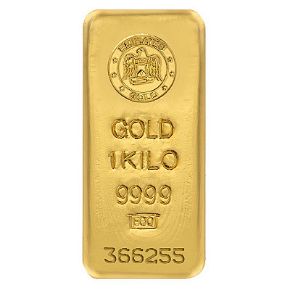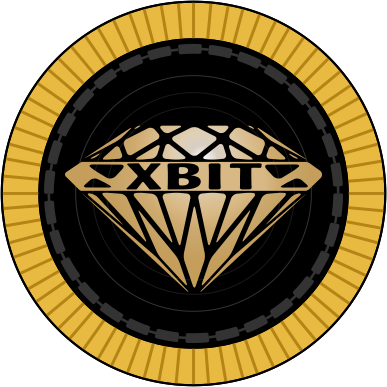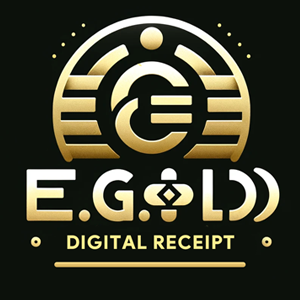
Gold has been the cornerstone of wealth preservation for centuries, while cryptocurrencies, such as Bitcoin and Ethereum, are the digital age's innovative response to money and investment. These two investment vehicles cater to vastly different audiences yet share some intriguing similarities. This detailed comparison explores their unique traits, performance, risks, and roles in a diversified portfolio.
Table of Contents
- Understanding Gold as an Asset
- An Overview of Cryptocurrencies
- Gold’s Historical Significance and Legacy
- The Rapid Evolution of Cryptocurrencies
- Physical vs. Digital: The Tangibility of Gold and Cryptocurrencies
- Storage and Security: Comparing Gold Vaults to Digital Wallets
- Scarcity and Value: Gold vs. Cryptocurrencies
- Volatility Showdown: Gold’s Stability vs. Crypto’s Fluctuations
- Market Liquidity and Accessibility: Gold vs. Crypto
- Adoption Trends: Gold and Cryptocurrency in 2025
- Regulatory Challenges: Gold vs. Cryptocurrencies
- Beyond Investments: Use Cases for Gold and Cryptocurrencies
- Gold as a Safe Haven Investment
- Cryptocurrencies as a Modern Asset Class
- Inflation Hedge: Comparing Gold and Cryptocurrencies
- Efficiency of Transactions: Gold vs. Crypto
- Environmental Considerations: Gold Mining vs. Crypto Mining
- Diversifying Your Portfolio with Gold and Cryptocurrencies
- The Cultural Impact of Gold and Cryptocurrencies
- Technological Integration: Gold Markets vs. Blockchain
- Investment Risks: Gold’s Challenges
- Investment Risks: Cryptocurrencies’ Challenges
- What Lies Ahead for Gold Investments in 2025
- The Future of Cryptocurrencies as an Investment
- Key Insights on Gold and Cryptocurrency Investments
Understanding Gold as an Asset
Gold is a precious metal revered for its rarity, luster, and utility. For centuries, civilizations have used it as currency, jewelry, and an industrial material. Its intrinsic value is tied to its physical properties and the global consensus on its worth.
An Overview of Cryptocurrencies
Cryptocurrencies are digital or virtual currencies secured by cryptography, making them nearly impossible to counterfeit or double-spend. Bitcoin, the first cryptocurrency, was created in 2009. Today, thousands of cryptocurrencies serve diverse purposes, including transactions, smart contracts, and decentralized finance.
Gold’s Historical Significance and Legacy
Gold’s significance spans millennia. From the Roman Empire to modern central banks, gold has been a symbol of power, security, and economic stability. Even today, central banks hold gold reserves to hedge against economic uncertainty.
The Rapid Evolution of Cryptocurrencies
Cryptocurrencies represent a new era of financial innovation. Bitcoin, the pioneer, introduced the concept of decentralized currency without intermediaries. Ethereum expanded the potential with smart contracts, paving the way for an ecosystem of decentralized applications.
Physical vs. Digital: The Tangibility of Gold and Cryptocurrencies
Gold is tangible; you can hold it, store it, and physically possess it. Cryptocurrencies, on the other hand, exist only in digital form, requiring trust in technology and secure storage methods.
Storage and Security: Comparing Gold Vaults to Digital Wallets
Storing gold requires physical space, vaults, and often insurance. Cryptocurrencies need digital wallets and robust cybersecurity measures. Both require strategies to mitigate theft and loss.
Scarcity and Value: Gold vs. Cryptocurrencies
Gold's scarcity is geological, with finite reserves on Earth. Cryptocurrencies like Bitcoin are programmatically scarce, with a capped supply of 21 million coins, making them similar in their value proposition.
Volatility Showdown: Gold’s Stability vs. Crypto’s Fluctuations
Gold is known for its price stability, often serving as a safe haven during economic turmoil. Cryptocurrencies are highly volatile, with prices influenced by speculation, regulatory news, and technological advancements.
Market Liquidity and Accessibility: Gold vs. Crypto
Gold markets operate globally with high liquidity. Cryptocurrencies are also highly liquid, especially top coins like Bitcoin and Ethereum, with the added advantage of 24/7 trading.
Adoption Trends: Gold and Cryptocurrency in 2025
Gold has universal acceptance as an investment and store of value. Cryptocurrencies are rapidly gaining traction, particularly among tech-savvy investors and in economies with unstable currencies.
Regulatory Challenges: Gold vs. Cryptocurrencies
Gold has well-established regulations across the globe. Cryptocurrencies face evolving regulatory landscapes, with varying degrees of acceptance and scrutiny in different countries.
Beyond Investments: Use Cases for Gold and Cryptocurrencies
Gold’s uses extend to jewelry and industrial applications, such as electronics and dentistry. Cryptocurrencies are integral to blockchain ecosystems, enabling decentralized finance, tokenization, and more.
Gold as a Safe Haven Investment
During economic downturns, gold historically holds or increases its value, making it a preferred choice for wealth preservation.
Cryptocurrencies as a Modern Asset Class
Cryptocurrencies are often viewed as speculative investments but are gaining recognition as an asset class, particularly for those seeking high returns.
Inflation Hedge: Comparing Gold and Cryptocurrencies
Gold is a proven hedge against inflation, retaining purchasing power over decades. Cryptocurrencies, particularly Bitcoin, are positioned as "digital gold," though their short history leaves the inflation hedge claim unproven.
Efficiency of Transactions: Gold vs. Crypto
Gold transactions can be cumbersome due to physical transfer requirements. Cryptocurrencies enable seamless, instant transfers across borders with minimal fees.
Environmental Considerations: Gold Mining vs. Crypto Mining
Gold mining is environmentally intensive, causing habitat destruction and carbon emissions. Cryptocurrencies, especially proof-of-work coins like Bitcoin, face criticism for their high energy consumption, although newer models like proof-of-stake are greener.
Portfolio Diversification: Gold and Cryptocurrencies
Gold provides stability to portfolios, while cryptocurrencies offer high-risk, high-reward opportunities. A balanced portfolio may include both, depending on risk tolerance.
Cultural Significance
Gold holds cultural importance in weddings, festivals, and rituals across many societies. Cryptocurrencies are symbols of technological progress and financial democratization.
Technological Integration
Cryptocurrencies are at the forefront of technology, integrating with the internet, smart devices, and financial systems. Gold lacks such integration but remains universally recognized.
Risks Involved with Gold Investments
Gold investments face risks like theft, storage costs, and price fluctuations based on supply-demand dynamics and geopolitical tensions.
Risks Involved with Cryptocurrencies
Cryptocurrencies are prone to hacking, regulatory changes, and market manipulation. Their price volatility poses significant risks to investors.
When comparing gold and cryptocurrencies, it's essential to recognize that their roles in an investment portfolio often complement rather than compete. Each has unique characteristics that cater to different financial goals, timelines, and risk appetites. Let’s dive deeper into some concluding thoughts and actionable strategies to help you navigate the dynamic landscape of these two asset classes.
Bridging Tradition and Innovation
Gold and cryptocurrencies symbolize two extremes of the investment spectrum. Gold offers historical reliability and intrinsic value, while cryptocurrencies provide cutting-edge technology and revolutionary financial frameworks. Investors don't have to choose between them; they can strategically include both in their portfolios.
For instance, gold can act as a stabilizing factor in times of uncertainty, while cryptocurrencies might provide exponential growth opportunities. This dual strategy balances security with potential, ensuring that a portfolio can withstand various market conditions.
Practical Strategies for Diversification
Incorporating Gold:
- Allocate 5-10% of your portfolio to gold for stability.
- Invest through trusted avenues such as gold ETFs, bullion, or coins.
- Use gold to hedge against inflation and geopolitical risks.
Investing in Cryptocurrencies:
- Limit exposure to 5% or less due to volatility.
- Focus on established cryptocurrencies like Bitcoin and Ethereum.
- Research emerging projects with real-world utility but avoid speculative "meme" coins.
Blended Portfolios:
Combining gold and cryptocurrencies allows you to hedge against inflation while capitalizing on technological advancements. For example:
- In times of economic uncertainty, your gold holdings may retain value.
- During market booms, cryptocurrencies can amplify your returns.
Understanding Market Sentiments
Gold's Sentimental Value:
Gold’s allure lies not just in its financial worth but in its cultural and emotional significance. For centuries, it has been associated with wealth, power, and tradition. Even in the digital era, gold retains its charm, particularly in regions like India and China where it plays a pivotal role in weddings and festivals.
Cryptocurrencies and the Tech Revolution:
Cryptocurrencies attract a younger, tech-savvy audience looking to disrupt traditional financial systems. They symbolize the future of money, decentralization, and financial freedom, making them especially appealing to millennial and Gen Z investors.
Navigating Volatility and Risk
Gold:
- Gold’s price movements are typically gradual and tied to macroeconomic factors.
- Its low volatility makes it a safer bet for long-term investors.
Cryptocurrencies:
- Prices can swing dramatically within hours, influenced by market sentiment, regulation, or technological developments.
- Active monitoring and understanding market trends are crucial for crypto investors.
The Role of Institutional Interest
Gold:
Central banks have always been major players in the gold market, with consistent purchases reflecting its importance in global finance.
Cryptocurrencies:
Institutional adoption is accelerating, with companies like Tesla, MicroStrategy, and Square adding Bitcoin to their balance sheets. Additionally, crypto ETFs and futures are gaining traction, signaling growing acceptance.
A Glimpse into the Future
Gold's Endurance:
Gold’s centuries-old reputation as a reliable store of value ensures its continued relevance. Advances in mining and recycling technology could also sustain its supply for future generations.
Cryptocurrencies’ Evolution:
The future of cryptocurrencies lies in mass adoption and innovation. Decentralized finance (DeFi), non-fungible tokens (NFTs), and blockchain applications could revolutionize industries far beyond finance.
Final Thoughts for Investors
Understanding the core differences between gold and cryptocurrencies empowers you to make informed decisions. While gold provides a sense of security and tradition, cryptocurrencies offer unparalleled growth potential and modern utility.
Ultimately, the choice boils down to your financial goals, risk tolerance, and market outlook. A diversified approach, leveraging the strengths of both gold and cryptocurrencies, may provide the optimal balance for long-term wealth preservation and growth.
This is a Copyright Content of EE.GOLD. Do Not Use any of the Content without Permission.
NOTE
This Content is the copyrighted content of EE.GOLD. All rights are reserved. You are welcome to share or use our content only by including direct links to our website. Any other form of reproduction, distribution, or use without proper attribution is strictly prohibited.
This Content is intended solely for educational purposes. The information provided does not constitute financial or investment advice.
Please note that Digital Storage Receipt, Secure Storage Solutions, and Physical Gold Sales are the only services offered by EE.GOLD.
We strictly adhere to government regulations and are firmly against all illegal financial or investment activities globally.
For further inquiries, feel free to contact us through our official channels.










.png)

